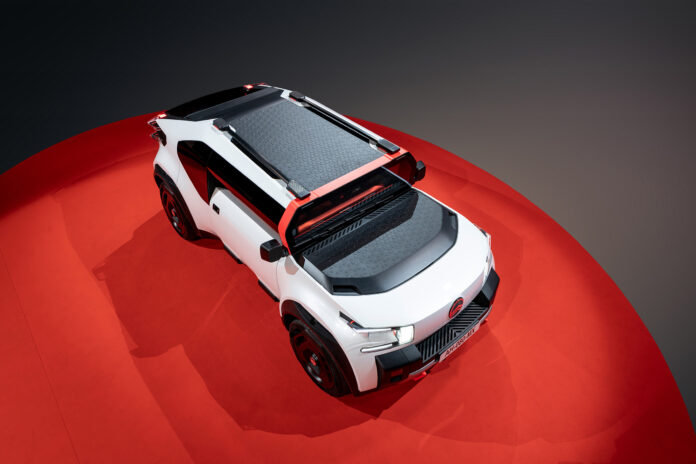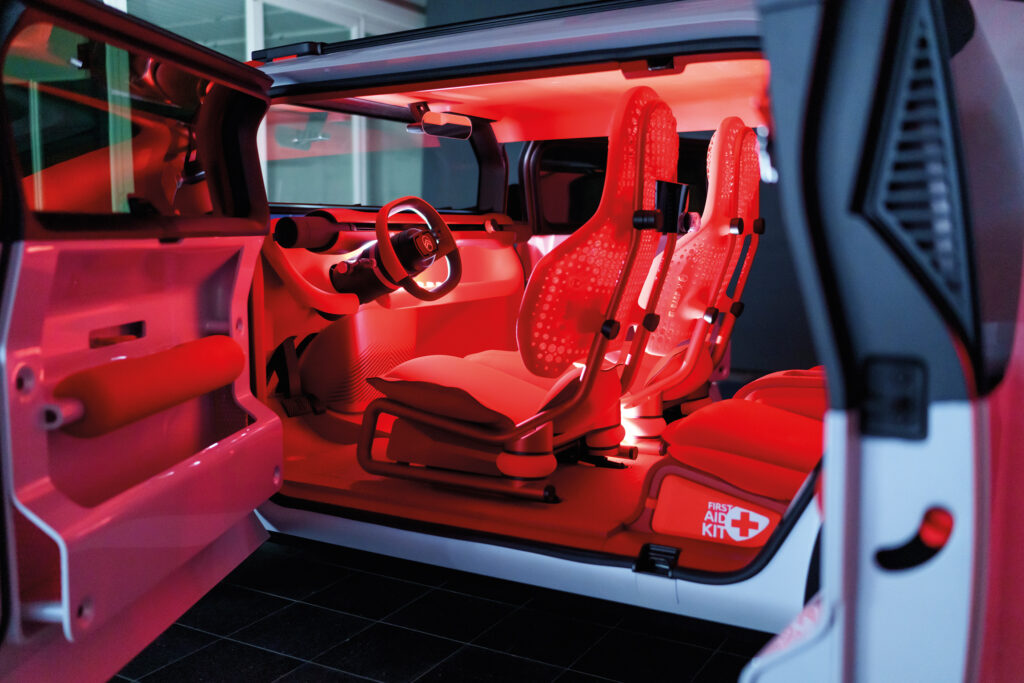
With the goal of demonstrating how much can be saved by reducing weight and resource usage, automotive brand Citroën has worked on the development of an electric concept car in collaboration with materials producer BASF and 3D printing service provider Sculpteo.
Named oli, the new vehicle has a speed limited to 110 km/h (68 mph) and gains a wider range and significantly improved battery lifespan. As most drivers have a mobile phone and portable speaker, which can be plugged in to the dashboard and automatically connected to the vehicle, the manufacturing team decided to not equip the vehicle with a sound or navigation system.

A manufacturing approach with reduced complexity, increased sustainability and appealing design
The minimalistic approach paved the way for a refreshing and innovative design. Various components have been radically reinterpreted and constructed by using materials in a different context. For example, the complete backrest is made of a flexible 3D printed plastic material (Ultrasint® TPU88A). The open lattice structure provides natural air flow, replacing all ventilators in the seat.
In addition to its product and engineering expertise, BASF was also able to contribute its design expertise through the Creation Center. “This is where the project was born,” said Alex Horisberger, Manager Industrial Design at BASF. “On a visit to the creative studio at Citroën, we were able to convince their designers with our materials and trend analyses. Working on the same level with Citroën’s interior and exterior designers was a personal highlight for me.”
Sculpteo took in charge the production of these parts as well as the production of about 20 parts at its France-based facility.
Another striking feature is that many of the new components are designed and manufactured from materials from the same chemical product family. Bonded and welded components made from different materials are a challenge in mechanical recycling. For this reason, the designers created as many components as possible from a single material.
This principle of simplicity was also implemented during production. With the driver and front passenger doors being identical, this saves on pressing tools and reduces complexity. The same applies to all wheel arches and bumpers. The oli concept car is proof of the fact that sustainability and an appealing design are not contradictory.
The color of the body perfectly conveys the concept of the car. At first glance it seems to be a pure white color, but mica particles have been added to emphasize the shape of the car. In contrast to the exterior, the materials of the interior – such as the seats and the flooring – have been coated with an intense orange color.
Laurence Hansen, Citroën Product & Strategy Director, sees the collaboration in a similar light. “The collaboration with BASF was a key factor in the design of oli and in developing an electric vehicle that’s as fun and efficient as possible for the near future. The innovative electric car runs counter to the trend toward increasingly heavier and more complex vehicles, instead focusing on ease and simplicity. It demonstrates how to keep environmental impact to a minimum, while bringing back the fun of a functional, electric vehicle,” Hansen said.
Remember, you can post job opportunities in the AM Industry on 3D ADEPT Media free of charge or look for a job via our job board. Make sure to follow us on our social networks and subscribe to our weekly newsletter : Facebook, Twitter, LinkedIn & Instagram ! If you want to be featured in the next issue of our digital magazine or if you hear a story that needs to be heard, make sure you send it to contact@3dadept.com





